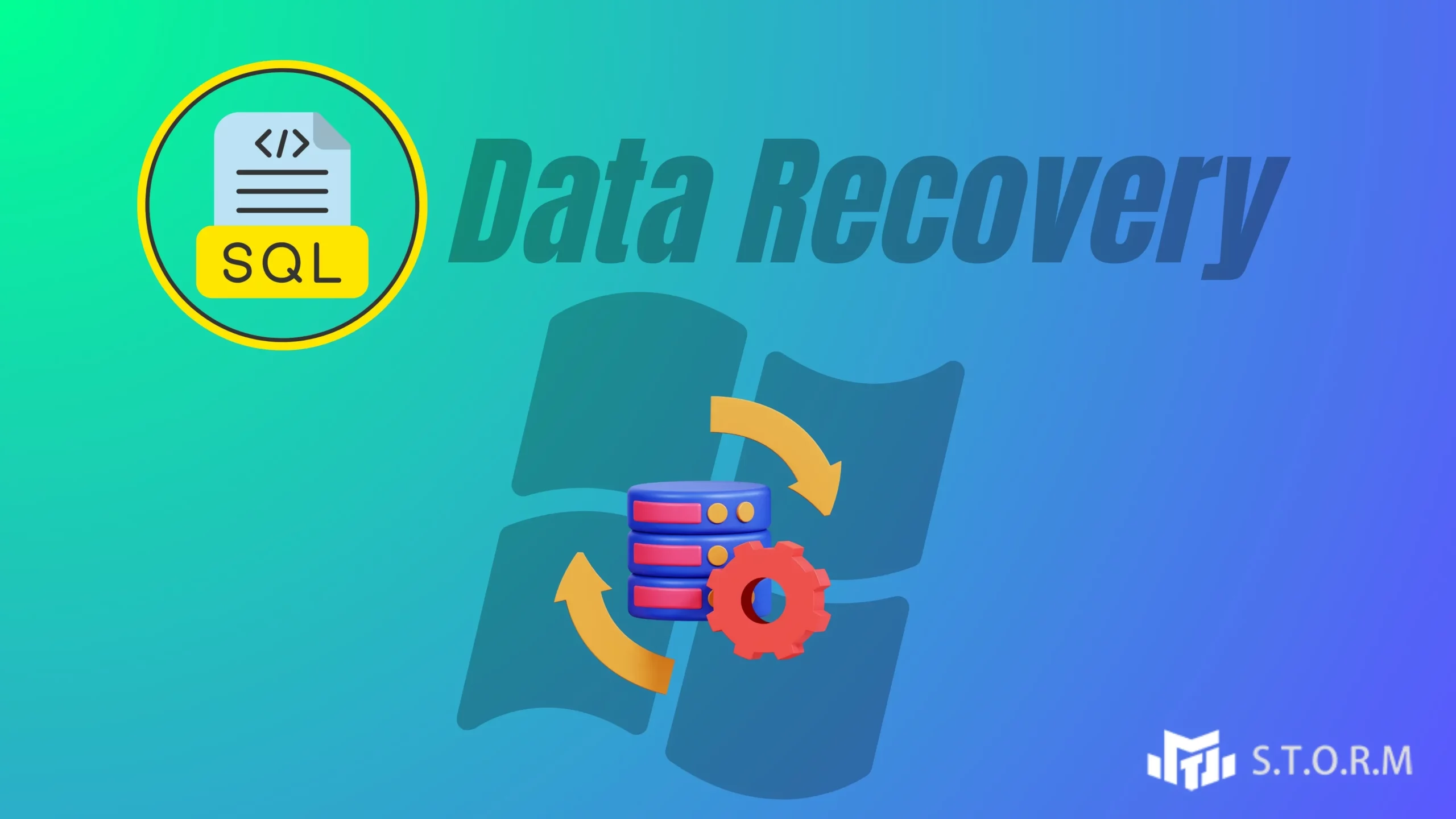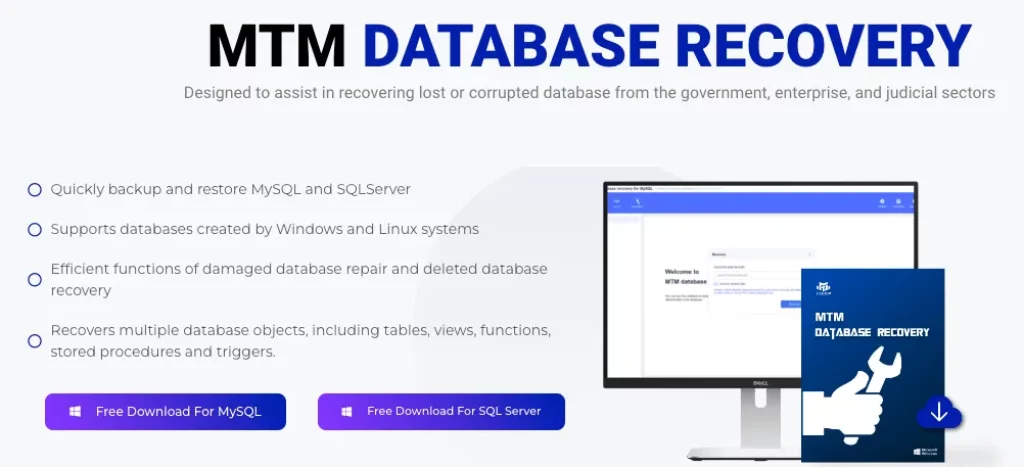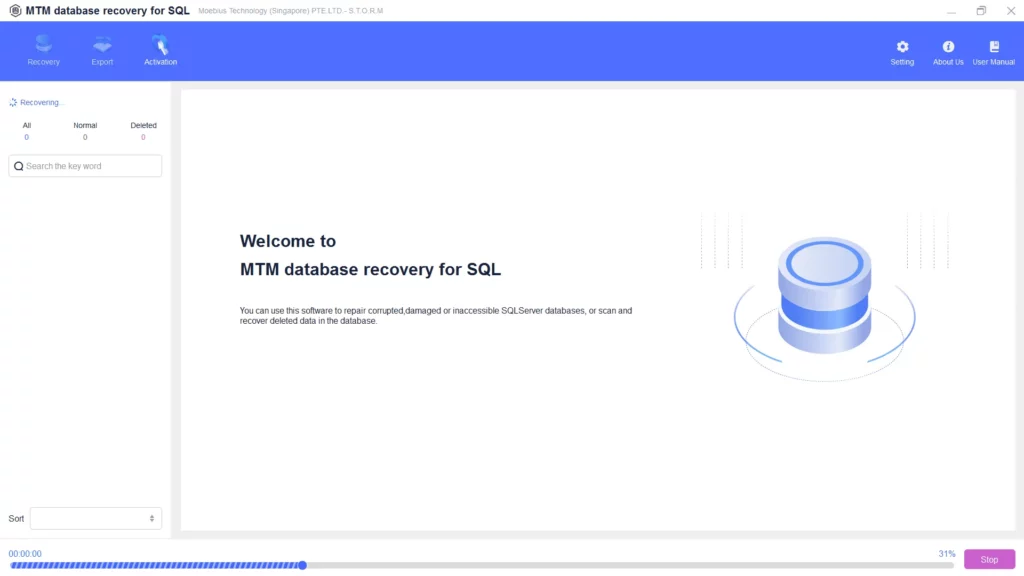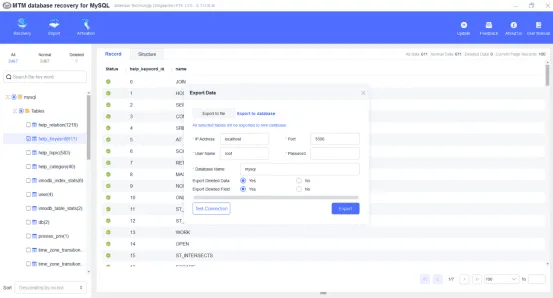
MTM database recovery is a cutting-edge solution designed to retrieve corrupted database files. It specializes in MySQL and SQL server database recovery on an enterprise level for different sectors.
You already know that system crashes, disk failures or user errors can jeopardize data integrity if you have ever worked with an RDBMS. That’s where robust database recovery software enters. It safeguards against potential data loss, ensuring that organizations can swiftly restore their databases to a consistent and stable state.
Professionals in the judicial sector, law enforcement, and government use this software to back up and maintain data flow all across the components without any loss. MTM Database Recovery provides the most convenient way for officers to access and recover database data evidence. You can recover MySQL and SQL server databases efficiently with it. So, without further ado, let’s learn more about MTM database recovery software.
Who Uses the MTM Database?
MTM database performs specific tasks in different sectors. Here are a few examples:
Judicial Sector
Within the judicial sector, MTM database recovery serves as a valuable asset for court clerks, district judges, and court administrators. The software excels in efficiently recovering data from judicial databases, including case files, witness testimonies, and court records. Its fast scanning and recovery processes prove crucial in time-sensitive legal cases, and its user-friendly interface ensures accessibility for all staff members.
Government Sector
In the government sector, the MTM database is an indispensable tool for recovering databases compromised by external threats like virus attacks. Government cybersecurity analysts have attested to the software’s efficacy in successfully retrieving critical data, preventing potential disasters, and fortifying governmental databases against cyber threats.
Enterprise Sector
For enterprises facing catastrophic disk failures or database corruption issues, MTM Database Recovery emerges as a lifeline. IT Managers have experienced the software’s efficiency in recovering critical data related to products and finance, ensuring minimal downtime, and preventing losses.
Classification of Failures
MTM database recovery software addresses multiple failures encountered during SQL server operations, providing comprehensive recovery. DBMS failures are categorized into distinct classes, i.e., logical, system-related, hardware failures, and more. The classification aids in the understanding and resolution of issues.
Types Of MySQL Database Failures
Here are the key types of failures you might encounter while working with a database management system (DBMS):
Logical Failures
It occurs due to issues like incorrect SQL queries, data corruption, or accidental deletion. MTM database recovery employs advanced algorithms to detect logical failures and restore data integrity.
Physical Failures
Arise from hardware malfunctions, disk crashes, or other physical damage. The robust MTM recovery mechanisms excel in restoring databases affected by physical failures, mitigating data loss risks.
Transactional Failures
Result from transactional inconsistencies, disrupting the database’s state. The transactional recovery techniques of MTM, including deferred and immediate updates, facilitate consistent data restoration after non-catastrophic failures.
Corruption Failures
This type involves data corruption, compromising overall database health. MTM’s specialized tools excel in handling complex corruption issues, ensuring the recovery of inaccessible tables.
Disk Failures
It stems from disk malfunctions, posing a significant threat to database stability. MTM database recovery’s disk failure recovery strategies minimize downtime, swiftly restoring databases to operational states.
Features of MTM Database Recovery
MTM software distinguishes itself with many powerful features to recover lost or corrupted databases. Here’s an in-depth look at the important features that set it apart:
Versatile Database Support
MTM caters to diverse sectors, including government, enterprise, and judicial, showcasing its adaptability across different database environments. This ability to recover databases in different sectors ensures a broad range of applications are covered.
Efficient Backup and Restore
MTM offers swift backup and restore functionalities for both MySQL and SQL server databases. You get quick and reliable data backup, minimizing downtime in case of failures and expediting the recovery process.
Cross-Platform Compatibility
MTM data recovery tool supports databases created by both Windows and Linux systems. Its cross-platform compatibility enhances its usability, ensuring seamless recovery across different operating systems.
Comprehensive Data Recovery
This software recovers multiple database objects, including tables, views, functions, stored procedures, and triggers. You can regain access to a wide array of database components, ensuring a holistic recovery of important information.
Secure Data Export
It supports two ways to export data- CSV files and direct export to databases. It enables you to export recovered data flexibly, accommodating different use cases and data management preferences.
Data Security Assurance
MTM guarantees data security throughout the recovery process. Prioritizing user data security instills confidence, especially when dealing with sensitive information in sectors like government and judiciary.
User-Friendly Workflow
MTM follows a simple three-step process- Select, Preview, Export- for database recovery. The intuitive workflow ensures a user-friendly experience, making database recovery easy for users with varying technical expertise.
How Does MTM’s Database Recovery Work
MTM Database Recovery simplifies the database recovery process with an intuitive step-by-step approach, making it accessible for entry-level and advanced-level professionals. Here’s a comprehensive guide on how MTM Database Recovery works:
- First, click here to visit the MTM official website.
- Next, as per your type of database that needs restoration, download the suitable MTM version (MySQL or SQL Server).

- Free download and launch MTM on your system.
- Now, select the database from where you want to retrieve the corrupted data.

- MTM database recovery offers a preview feature, allowing you to inspect the recoverable data before initiating the restoration. The recovered data will be marked with a red cross.

- Once satisfied with the preview, proceed to export the data. The free version of MTM has limited functions. If you need to export the recovered data, choose one pricing plan and continue.
- MTM database recovery provides two convenient options, i.e., exporting to CSV files and exporting directly to databases; select your preferred method.

- Now, initiate the recovery process. MTM’s advanced algorithms and parallel processing complete this restoration in minutes.
- Throughout the recovery, you can monitor the progress, ensuring transparency and timely adjustments if needed.
- Once done, verify the recovered data’s integrity. MTM prioritizes data security, ensuring the restored information meets the highest standards.
Database Recovery Techniques
MTM database recovery facilitates quick backup and restoration of MySQL and SQL server databases. It supports databases created by both Windows and Linux systems, providing versatility in recovery options. The recovery models are as follows:
SQL Server Recovery Models
- Simple Model: Suitable for scenarios where minimal data loss is acceptable.
- Full Model: Ensures complete recoverability, enabling point-in-time recovery.
- Bulk-Logged Model: Balances performance and recoverability for bulk operations.
Restoring MS SQL Server
- Log-in and Restore: Access the computer, log in, and initiate the restore process. This straightforward approach ensures a seamless restoration of MS SQL Server databases.
- Recovery-Only Restore: This technique allows recovering a database without restoring data. It’s particularly useful as a final step in restoring a sequence of backups, streamlining the recovery process.
Price of MTM Database Recovery
Exact pricing details for MTM database recovery can be found on the official website. The software offers flexible plans according to the diverse needs of users. Here’s an overview of the ongoing pricing options:
MTM Database Recovery Plans
- For MySQL: Yearly subscription plan is $149.00
- For SQL Server: Yearly subscription plan is $199.00
- Toolkit Full Suite (MySQL & SQL Server): Yearly subscription plan is $299.00
Note: Each plan comes with a 24/7 service guarantee and a 30-day money-back promise.
Pros and Cons
Pros
- Specialized in SQL server database recovery.
- Versatile support for MySQL and access database recovery.
- Efficient Multi Tracker Module for parallel recovery.
- Positive user testimonials.
- Dedicated technical support.
- 30-day money-back on each plan.
Cons
- Licensing is required for extended usage.
Final Thoughts,
MTM database recovery emerges as a top-tier solution for front-line law enforcement agencies and related sectors. Its advanced features, efficient recovery techniques, and versatility make it a valuable asset for ensuring the integrity of MySQL and SQL server databases. Moreover, MTM ensures your data is retrieved without any threat of breaches or loss. With this guide, you can now understand if MTM fits your requirements before you make the purchase. Thanks for reading!
Frequently Asked Questions( FAQ):
Q1. What are the database recovery techniques?
Database recovery techniques involve processes like backup restoration, transaction log replay, and advanced algorithms to restore a database to a consistent state after a failure.
Q2. How do I change my database to simple recovery mode?
To change your database to simple recovery mode in SQL Server, right-click on the database name, select “Properties,” navigate to the “Options” page, and under “Recovery model,” choose “Simple.”
Q3. Why does an SQL database go into recovery mode?
An SQL database may go into recovery mode due to uncommitted transactions, software bugs, or unexpected shutdowns, triggering the need for recovery to ensure data integrity.
